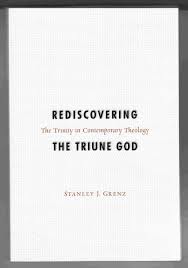Rediscovering the Triune God: The Trinity in Contemporary Theology
As appearing in The Pneuma Review Winter 2007
 Stanley J. Grenz, Rediscovering the Triune God: The Trinity in Contemporary Theology (Minneapolis: Fortress Press, 2004), 289 pages.
Stanley J. Grenz, Rediscovering the Triune God: The Trinity in Contemporary Theology (Minneapolis: Fortress Press, 2004), 289 pages.
This book should be in every theological library. Stanley Grenz (1950-2005) offers a splendid account of the story of trinitarian thought in the twentieth century. The lucidly written volume is destined to become a standard textbook in colleges and universities. At the same time, it also holds great promise to revive the popular understanding of the Christian God as one god in three persons. Rediscovering the Triune God addresses both historians and theologians and contributes a highly valuable review of both contexts to what the back cover calls “the contemporary revolution in Trinitarian thought.”
The book surveys the development of a renewed interest in the doctrine of the Trinity during the twentieth century. More precisely, Grenz focuses on the time period marked by the publication of Karl Barth’s Epistle to the Romans, in 1919, which is frequently seen as the initial impulse for the renewal of trinitarian thought, and by the publication of T. F. Torrance’s The Christian Doctrine of God, in 1996, which Grenz considers the last comprehensive theology of the triune God of the twentieth century. As a result, Grenz presents the reader with a list of eleven theologians who he considers the most significant contributors to the revival of trinitarian thought. Each of these voices comes from theological giants whose work has influenced much of the layout of the theological landscape since World War I. This list of trendsetters marks the framework for the entire book.
The overview is ordered topically, and the eleven theologians are grouped together in four chapters that follow the historical development of trinitarian thought in the twentieth century. In addition, the first chapter provides a historical basis for the overall theological discussion and sketches out “The Eclipse of Trinitarian Theology,” especially in the West, before the renaissance of the doctrine. The subsequent four chapters tell the story of the rediscovery of trinitarian thought by means of an unexpectedly brief list of central themes: the restoration of the trinitarian center (Chapter 2), the focus on the Trinity in history (Chapter 3), the idea of trinitarian relationality (Chapter 4), and the rediscovery of the immanent Trinity (Chapter 5). A brief epilogue concludes the book.
Category: Biblical Studies, Winter 2007


